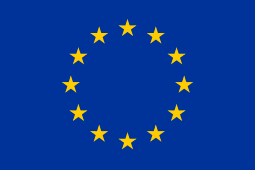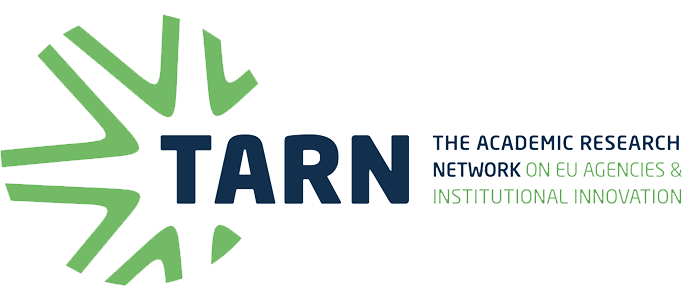EU agencies and Turkey – mode of differentiated integration?

The European Union (EU) and Turkey have a long and multifaceted relationship. In this entry (based on a recent longer analysis) we focus on Turkey’s involvement with the EU’s decentralised agencies, and more particularly on whether and to what extent this involvement can be viewed as a part of a differentiated integration approach for the largest candidate for EU membership.
The European Union (EU) and Turkey have a long and multifaceted relationship. In this entry (based on a recent longer analysis) we focus on Turkey’s involvement with the EU’s decentralised agencies, and more particularly on whether and to what extent this involvement can be viewed as a part of a differentiated integration approach for the largest candidate for EU membership. Differentiation is ‘an increasingly salient feature of European integration’ by being at the core of the constitutional architecture of the EU, and has gained prominence in light of the ongoing manifestations of internal and external centrifugal forces. The future of Europe is also one of external differentiated integration, in which non-member states participate in the shaping of future EU policies. In addition, EU agencies are ‘more autonomous than core EU bodies’ offering potentially ‘more leeway to craft flexible integration arrangements.’ Agencies’ engagements, therefore, could in fact represent one of the important pieces in the puzzle of differentiated integration for Turkey and Europe´s future. Assessing all bilateral and ad hoc working arrangements between the EU agencies and Turkey over time, we show that Turkey´s involvement spanned 18 EU agencies in 2021, in different ways, covering various policy areas and driven by different logics of action at different moments in time.
To understand the key drivers of this ‘external face of differentiation’ and their underlying perceptions, a number of factors might be at play. Lavenex identifies two main motivations explaining the different forms of cooperation between third countries and EU agencies: a foreign policy rationale and/or a sector-specific interdependence logic. According to the top-down foreign policy rationale, we expect EU agencies to act political, serving the general interest of the EU by supporting ‘the European Commission in promoting its core foreign policy agenda to enhance regional stability, strengthen liberal democratic values, foster regional economic wellbeing through third countries’ approximation to the EU acquis.’ In this way, the country’s integration status determines the level of cooperation between the EU agency and the third country, i.e. patterns of cooperation ‘mimic’ the level of integration. According to the bottom-up sector specific interdependence logic, we expect EU agencies to act functionalistic, serving the functional needs of the EU stemming from sector specific interdependences and the degree of the externalities of non-cooperation with third countries. In this way, EU agencies cooperate with third countries’ regulators ‘with whom they have strong sectoral interdependence.’ ‘In reality elements of both approaches occur simultaneously and interact in many ways as is demonstrated by the Turkish example. Different categories of third countries interested in and benefiting from cooperation with the EU agencies follow different logics of cooperation: 1. Members of the EEA/EFTA; 2. ENP countries; and 3. countries such as Turkey and the Western Balkans, which are all potential candidates to join the EU or already have candidate status.
Participation in EU agencies can take different forms. Building on Rimkutė and Shyrokykh’s work on the EU agencies’ role in acquis transfer in ENP countries, we distinguish between special bilateral agreements and ad hoc arrangements. Special bilateral agreements establish sustained institutionalised links between an EU agency and Turkey, focusing on technical collaboration. Technical ad hoc arrangements are temporal Instrument for Pre-Accession Assistance (IPA) project-based technical and/or scientific activities aimed at institution and technical capacity building in Turkey. Eventually, collaboration between EU agencies and Turkey can take three forms: bilateral working agreements, ad hoc arrangements or a combination of the two. In 2021 a total of 18 EU agencies engaged with Turkey overall. Most collaborated exclusively on a technical ad hoc basis, while four agencies engaged via both forms of arrangements; bilateral working and ad hoc technical arrangements: the European Environment Agency (EEA), the European Aviation Safety Agency (EASA), the European Monitoring Centre for Drug Abuse and Addiction (EMCDDA), and the European Border Control Agency (Frontex).
Between 1999 and 2004 Turkey was required to take and succeeded in taking important steps in order to meet the Copenhagen criteria, and consequently, the European Council adopted the EU-Turkey Accession Partnership (2001), providing a road map for Turkey´s EU accession process and the Turkish Government’s adoption of the National Programme for the Adoption of the Acquis, reflecting the Accession Partnership. Cooperation between EU agencies and Turkey started before the official opening of accession negotiations in 2005, with the EEA in 2003 and Europol in 2004, but then really picked up speed shortly afterwards. Both the EEA and Europol work in interconnected issues areas characterised by higher interdependencies with Turkey.
It was only in June 2006, with the opening of practical negotiations on the 35 Chapters of the acquis, that a series of bilateral working arrangements and ad hoc arrangements started emerging. This time, however, it was those EU agencies working in both policy areas characterised by higher or lower sector specific/functional interdependencies, which showed immediate interest vis-à-vis Turkey. As for sectors with higher sector-specific/functional interdependencies, these included the EASA (2006) which is in charge of setting the rules, guidelines and standards for safety and environmental aspects of civil aviation and the EMCDDA (2007), which provides an overview of European drug problems. Both EU agencies cover areas with higher interdependencies. On the other hand, there are the European Medicine Agency (EMA, 2006); EFSA (2007); EU-OSHA (2007); ECHA (2009). Most of the above represent EU agencies in policy areas characterised by lower sector specific interdependencies.
Another set of EU agencies followed between 2009 and 2016 when, eleven years after the official start of accession negotiations, the EU started slowly closing its ‘accession door’ vis-à- vis Turkey, covering policy areas of both lower and higher interdependencies: CEPOL (law enforcement training), ERA (railways), Frontex (border control), ETF (reform of education, training, and labour market systems), EIGE (gender), Eurofound (improvement of living and working conditions), Eurojust (criminal justice cooperation).
By 2016, when the European Parliament voted to suspend accession negotiations with Turkey over human rights and rule of law concerns, 15 EU agencies had established forms of cooperation. The EU´s General Affairs Council stated that ‘Turkey has been moving further away from the European Union. Turkey’s accession negotiations have therefore effectively come to a standstill, and no further chapters can be considered for opening or closing and no further work towards the modernisation of the EU-Turkey Customs Union is foreseen.’ Even with this kind of approach to Turkey’s accession negotiations in 2018, technical ad hoc arrangements between EU agencies and Turkey continued mainly in areas of higher sector-specific interdependence covering the fields of transportation (EMSA in 2018), migration (EASO in 2019) and the COVID pandemic (ECDC in 2020). We see that EU agencies have continued and extended their engagement with Turkey despite the ‘freeze of accession talks, which might hint at the potential of the outreach of EU agencies to accession countries and suggests that this represents a so far fairly neglected form of ‘external face of differentiation’.
To sum up, Turkey has been successfully drawn into EU trans-governmental networks over the last 21 years – starting before official candidate status and continuing after the formal freeze of the accession talks in 2019. In 2021 a total of18 EU agencies engaged with Turkey. This indicates that cooperation between EU agencies and Turkey does not only follow a sector-specific interdependence logic, but that EU agencies also act as an extended arm of the European Commission, and that Turkey´s integration status plays an important role. This raises multiple questions: is it possible to perceive third parties’ voluntary participation in EU agencies in lieu of membership? What is the main mechanism that makes one classify such participation as external differentiation, but not functional cooperation? Also, what of the constitutional implications for third countries?
In times when the EU-Turkey relationship has become extremely complex and dynamic, ‘a new institutional framework, termed a “dynamic association”, that would be complementary to Turkey´s stalled accession process’ would need to reflect on the continued potential of EU agencies, as a form of external differentiation. ‘Further enlargement of the Union and its multiple links with non-member European countries indicate that expansion of the scope of differentiated integration is, indeed, inevitable.’ For future EU-Turkey relations, therefore, the EU agencies seem to offer a valuable asset for Turkey and the EU in terms of the uncertain road towards membership. As demonstrated in this analysis, decentralised EU agencies already present a flexible mechanism for multifold cooperation trajectories. In the light of enlargement fatigue and shrinking membership prospects, this feature of trans-governmental outreach towards Turkey leads to continued sector-specific policy diffusion, policy transfer and regulatory approximation. In this way, the EU agencies continue to play an important role in Europe´s differentiated future, with non-member states/candidate countries engaging in important EU integration projects.
Dr Michael Kaeding is Professor of European Integration and European Union Politics Institute of Political Science, University of Duisburg-Essen and 2020/21 Mercator-IPC Fellow email: michael.kaeding@uni-due.de
Dr Marko Milenković is Affiliated Research Fellow, Center for Constitutional Studies and Democratic Development (CCSDD) at Johns Hopkins University’s School of Advanced International Studies (SAIS) and Research Fellow, Institute of Social Sciences Belgrade email: mmilenkovic@jhu.edu
Other blogs:
Also read
-
The Boards of Appeal established for the decision-making agencies perform a function that lies between exercising administrative review, at the one end, and offering judicial review, at the other. It is still unclear in which direction they will ultimately move, and more research in this fast...
-
by Trym Nohr Fjørtoft
In 2015, many European states experienced a massive influx of migrants and refugees seeking protection within their borders. The European Refugee crisis was a crisis in many respects—first and foremost for the people forced to flee their homes, but also for the institution... -
EU agencies are now at the forefront of policy implementation in EU’s migration, asylum and external border control policies for two primary reasons: to overcome the policy implementation gap and enhance interstate solidarity.


